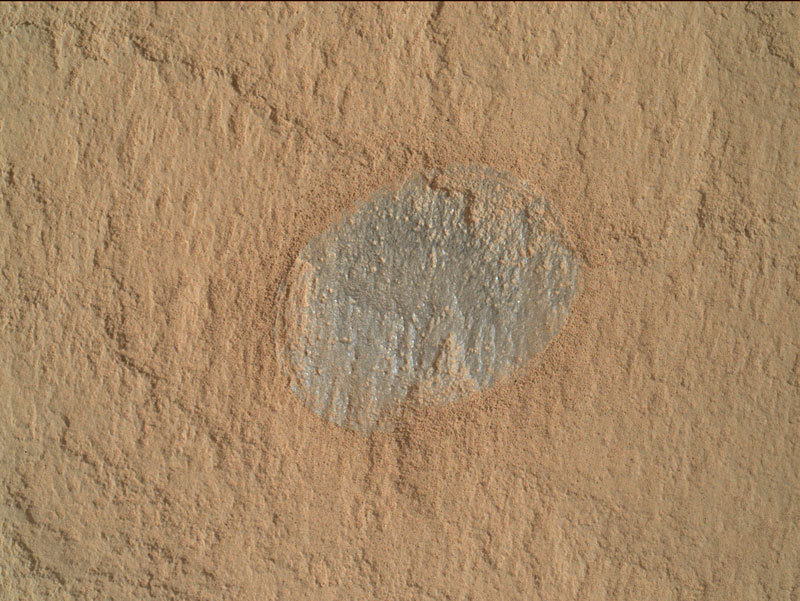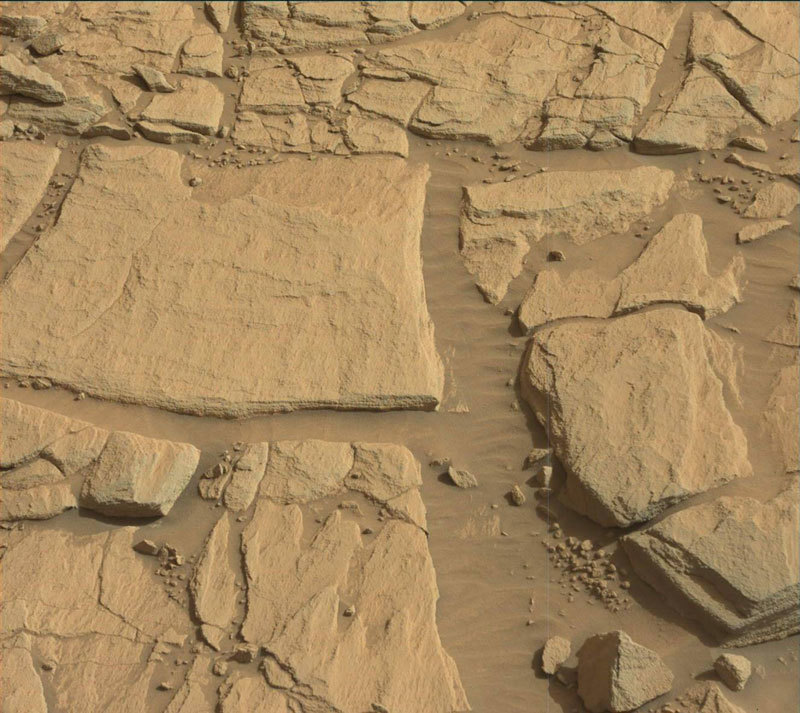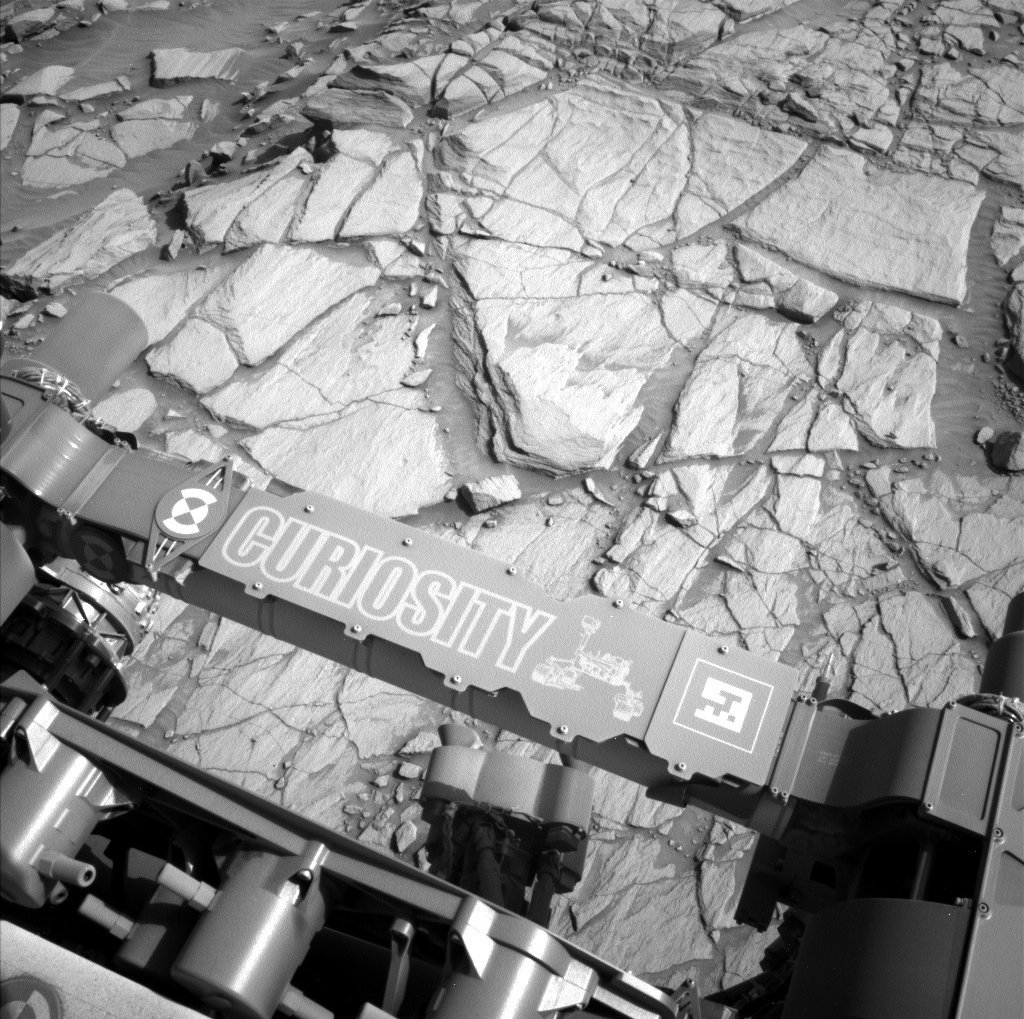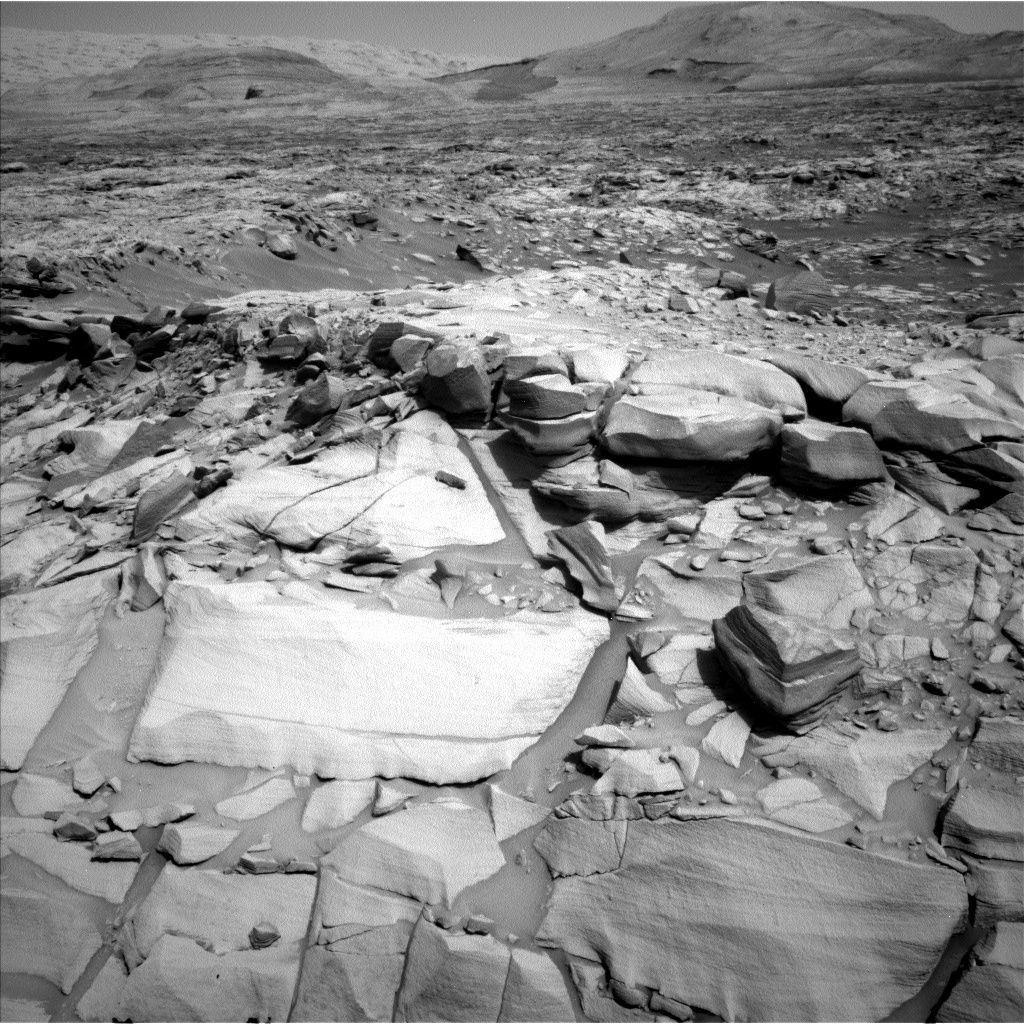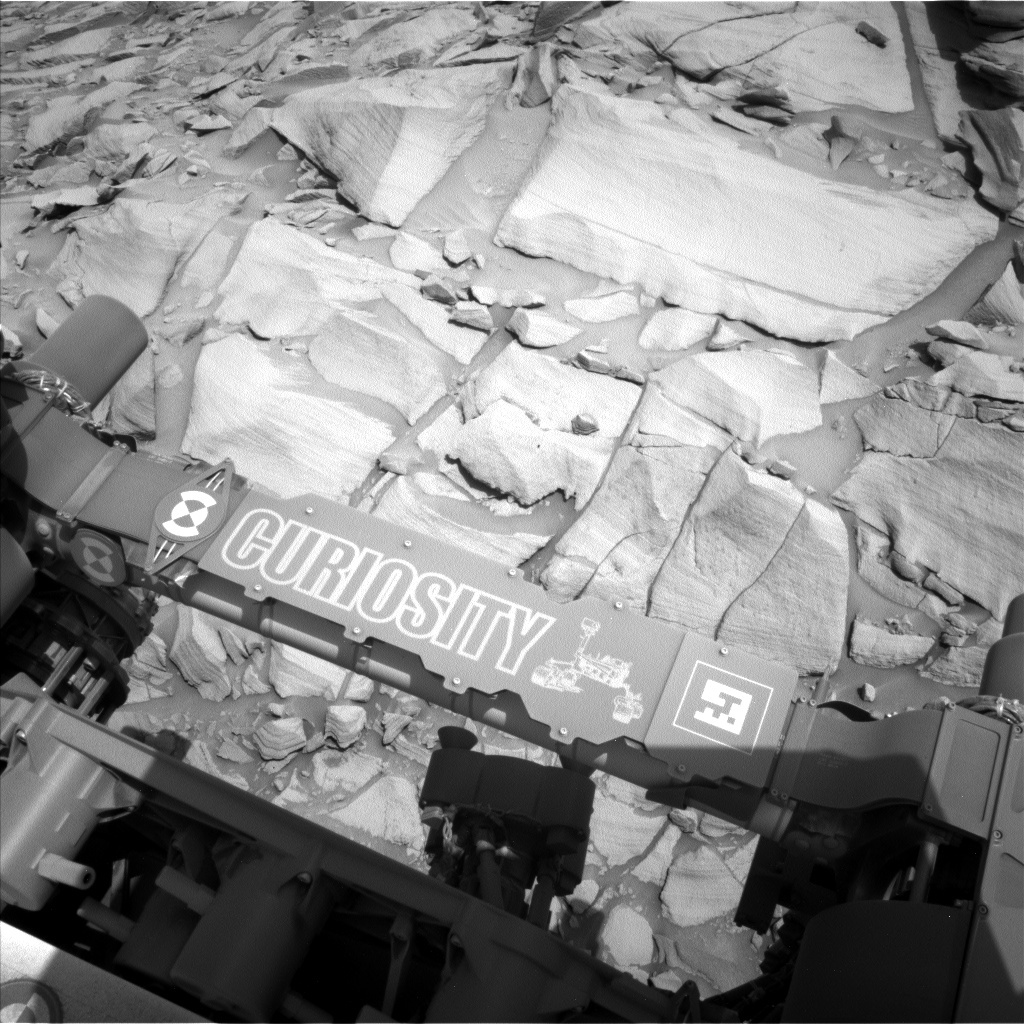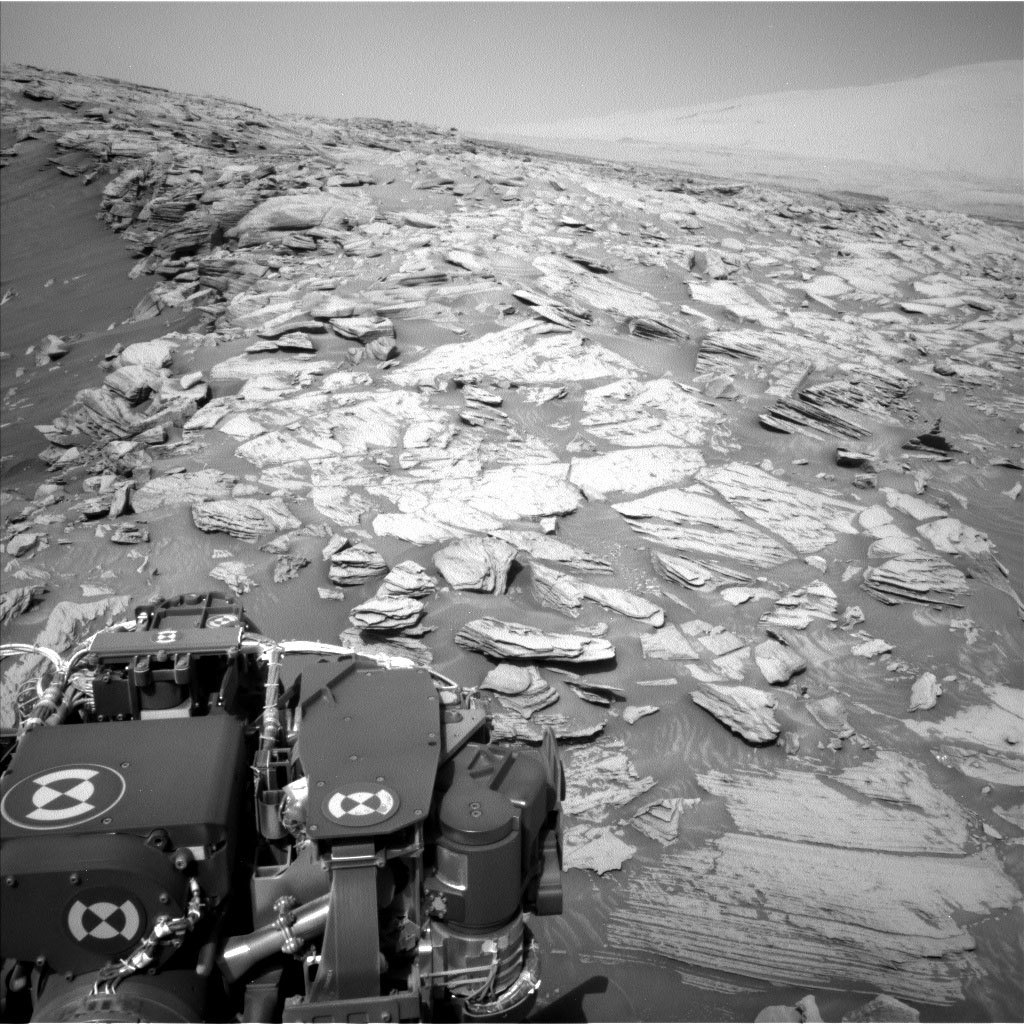March 20, 2020
Sol 2710-2712: Full Drill Ahead!
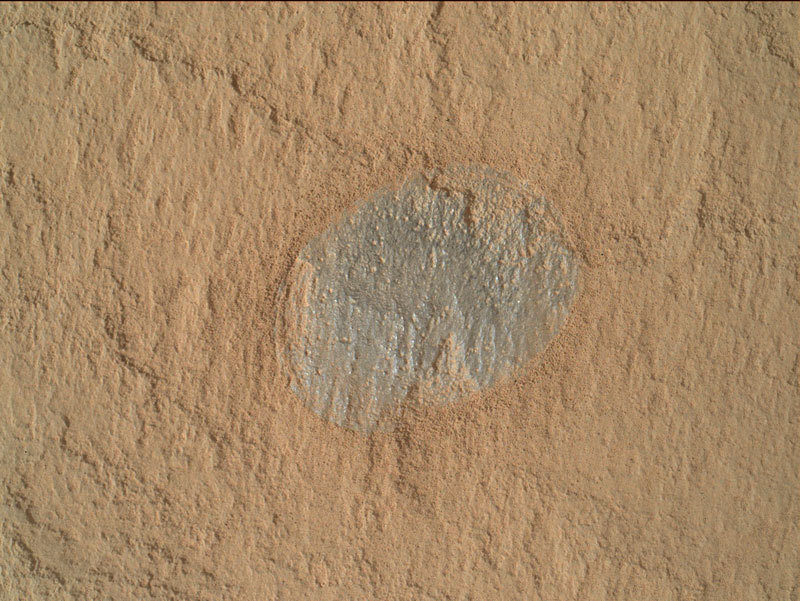
Curiosity will soon drill Edinburgh bedrock, seen in this image taken by MAHLI onboard NASA's Mars rover Curiosity on Sol 2703.Credits: NASA/JPL-Caltech/MSSS Download image ›
In light of recent events, NASA’s Jet Propulsion Laboratory has transitioned to teleworking for most employees. For the last few weeks, we have been making preparations so that our rover operations can be carried out with the JPL-based members of the team working remotely. Luckily, most of the science team has been working remotely for years! I’ve been serving as a Geo Keeper of the Plan (GKOP) for the last ~5 years, and most of that time was spent working remotely from the University of Tennessee. So, for most folks, it’s business as usual, which has helped smooth our transition to full teleworking.
Today we planned a 3-sol weekend plan. Despite today being our first day of fully remote operations, we made a jam-packed plan of activities centering around drilling target “Edinburgh!”
We’ll kick off the first sol of the weekend plan, Sol 2710, with a nice long science block full of both geological and environmental-focused observations. During the science block, we’ll perform a Mastcam multispectral observation of the “Eshaness” target (we had our first look at Eshaness on Monday using the DRT, MAHLI, and APXS instruments). We will also collect ChemCam LIBS data on two nearby targets including a soil target “Digg” and bedrock target “Eaglesham,” along with corresponding Mastcam documentation images. To wrap up our science block, we will make some of our standard atmospheric observations, including a Navcam dust devil survey, a Mastcam solar tau, and a Mastcam crater rim extinction image.
We have another science block in the early morning of Sol 2711, during which we’ll perform a similar suite of environmental observations as well as a Mastcam 360-degree mosaic. These hefty mosaics are especially useful during our drill campaigns, as they provide great context for our drilling operations and the broader geology around us. The rest of Sol 2711 will be dedicated to drilling the target “Edinburgh.”
Following a much-deserved night of sleep, Curiosity will wake up on Sol 2712 for the last science block of the weekend plan. During the science block, we’ll take dust devil survey and line-of-sight images with Navcam. Next, we’ll use ChemCam’s passive mode (no laser) to observe the Edinburgh drill tailings as well as use the RMI to take a long-distance mosaic of the target “Three Lochs,” an area further up the Greenheugh pediment. We’ll round out the plan by using Mastcam to take a multispectral observation of the Edinburgh drill tailings and take a stereo mosaic to expand our coverage of the “Hilltop” area, first imaged on Sol 2705.
We managed to plan a very full weekend plan for Curiosity, and had a very smooth day of planning for Curiosity’s operations team. It’s full steam (or rather, drill) ahead!
Stay safe, and continue to explore Mars with us!

